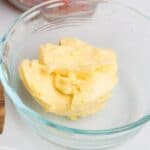Key points:
- Vegetable oil is versatile due to its neutral taste and high smoke point, but alternatives can offer more flavor, nutrients, and improved baking results.
- Melted butter, applesauce, fruit puree, and yogurt are all great alternatives to vegetable oil for baking.
- Some of the best substitutes for vegetable oil when cooking are sunflower oil, safflower oil, peanut oil (not for peanut allergies), avocado oil, and olive oil.
Vegetable oil has a neutral taste, and refined versions have a high smoke point. These characteristics make it incredibly versatile and a go-to in many households for baking, frying, roasting, dressings, and more.
Besides the debate around how good vegetable oil really is for your health, you may be wondering whether there are alternatives that would provide more flavor, nutrients, and better baking results instead.
Our list of the best replacements for vegetable oil will allow you to make the right decision for your health and your cooking. Let’s dig in.
What is Vegetable Oil?
Vegetable oil is generally purchased as a common and versatile cooking ingredient available in any grocery store. The exact type of oil used by different brands may vary. Although technically, products such as olive oil and coconut oil can be classified as vegetable oils, the bottle labeled as ‘vegetable oil’ in-store is mostly refined and produced from more cost-effective seeds or vegetable sources.
In the USA, vegetable oil is most commonly soybean oil and blends of canola, safflower, corn, and sunflower oils. Cooking oils sold as ‘vegetable oil’ are also a lot more versatile than, for example, olive or coconut oil since it has a high smoke point and can be used for deep frying.
When you buy vegetable oil, you, therefore, know that it will have a neutral flavor, be liquid at room temperature, and be suitable for deep-frying, baking, and marinades.
Keeping these characteristics in mind, it is important to know that not all oils, whether derived from plants, seeds, or animal fats, are the same. Some products have a low smoke point which means they will not be suitable for frying.
Others have a distinct taste that may influence the flavor of your dish. You need to consider all the factors when choosing a suitable substitute.
One common characteristic throughout, is, however, that all oils have high fat and calorie content. Some options are healthier than others, but even then, too much can pack on a few pounds.
Vegetable Oil Smoke Point
When choosing a vegetable oil substitute, the best option will depend on what you are cooking. If you are frying or cooking at high heat, choose an alternative with a high smoke point.
The smoking point is the heat temperature at which it starts to smoke. This is the point where chemical changes take place and the components start to break down. Using a product with a low smoke point when cooking with very high heat can cause a bitter taste.
Smoking points generally range between 325 °F to 520 °F. Free fatty acids and impurities can also cause smoking. Refined types that have been through a purification process to remove impurities, therefore, have a higher smoke point and are best for all kinds of frying.
Unrefined types, such as walnut and flaxseed oil, should not be heated and are best suited to make dressings.
Vegetable Oil Substitutes for Baking
Substitutes can be replaced measure for measure.
1. Melted Butter
Butter is fabulous in baked goods because it adds moisture and contributes to a rich flavor. This is definitely the best vegetable oil substitute for delicious baking. You can often identify items that are made with real butter because of their superior quality, texture, and taste.
Since butter is solid at room temperature, it needs to be softened to replace vegetable oil. This can be done for a few seconds in the microwave. It does not have to be liquid, as long as it is soft enough to incorporate easily with other ingredients when mixing dough or batter.
Real butter is an expensive alternative option, and since it is an animal product, it is not suitable for vegans. It is high in fat and calories, so moderation is key.
Best for: Cakes, muffins, and cookies. Butter can also be used for light sautéing and making sauces.
Related: Butter replacement in baking
2. Applesauce
Applesauce is an alternative on the other end of the spectrum as it contains hardly any fat and is much lower in calories. If you are watching your fat intake, this is the option to go for.
Since applesauce is naturally sweet, it is best to use it in sweet recipes that require a soft texture. Items like cookies that have a crunchy or brittle texture won’t work well with applesauce. You can make your own by cooking and pureeing peeled and cored apples to a smooth consistency.
Best for: Cakes and muffins
3. Fruit Puree
Other fruit purees such as pear, banana, plum, or even pumpkin will work for soft and moist baked items and are suitable for vegans. Bananas have a strong flavor, so be aware that they will most likely change the flavor profile of what you are baking.
Replace the fruit puree in equal quantities and keep in mind that since it adds moisture it is not suitable for crunchy items such as pastry or cookies.
Best for: Cakes, muffins, bread, and crumpets.
4. Yogurt
Yogurt is another healthier, lower-calorie option that makes a successful vegetable oil alternative in baking. Use plain yogurt or Greek yogurt to avoid a change in flavor. If you are baking something sweet, you could also opt for a vanilla-flavored yogurt. Use it as a replacement in equal quantities. Note that this won’t be suitable for vegans or people with dairy allergies.
Best for: Cakes, muffins, and bread.
Note: Applesauce, yogurt, and fruit purees are not suitable as a replacement in cooking methods besides baking.
Best Substitute for Vegetable Oil When Cooking
5. Sunflower Oil
Sunflower oil is often included in certain blends of vegetable oil, but if you only have pure sunflower oil on its own, it makes a perfect substitute for any application, including frying and baking.
It is made by cleaning, heating, and pressing sunflower seeds for extraction of the oils, after which it is refined and processed.
The neutral flavor allows you to add it to any dish without affecting the taste, and the high smoking point at 450 °F makes it very versatile for use in high heat cooking methods.
Best used for: Stir fry, sauteing, deep-frying, oven roasting, baking, and salad dressings.
6. Safflower Oil
Safflower oil also has a high smoking point at 510 °F. The tasteless product is made from pressed safflower plant seeds and can be used in sweet and savory dishes of all kinds. If you like having multi-purpose products in your pantry, this is a good option to keep around for everyday cooking and baking.
Its high smoke point prevents it from causing a bitter taste when frying at high temperatures. Grapeseed oil and canola oil also have very similar properties.
Best used for: Deep frying and shallow frying, oven roasting, baking, and salad dressings.
7. Peanut Oil
Since it is derived from peanuts, this substitute is not suitable for people with peanut allergies. It does have a distinct taste so check that the flavor is compatible with the flavor profiles in your dish.
Due to the strong taste, it may be less suitable for baking and best used for savory cooking. It has a high (450 °F) smoke point which makes it great for almost any type of heat application.
Best used for: Sauteing, stir-fries, deep-frying, and oven roasting.
8. Avocado Oil
This option comes in both refined avocado oil and unrefined avocado oil options which makes it versatile for both raw salad dressings and cooking. It does have a recognizable flavor that may influence the taste of your dish so when using it as a substitute make sure that your flavor profiles are compatible, especially when the other flavors in your dish are subtle.
Best used for: Sauteing, light frying, roasting, marinades, and salad dressing
9. Olive Oil
Contrary to popular belief, olive oil has a low smoking point at 210 °F which means it is not that suitable for cooking at high temperatures. In its raw form, it is known for its health benefits, although the pure product can be quite pricey. Cheaper versions are often blended, however, they can still be used as a replacement.
Olive oil has a distinct taste that is suitable for salad dressings, drizzling over vegetables, bread, pizza, and for dipping. It is also a popular option for oven roasting and low to medium heat sautéing.
Olive oil cake is an ideal example of its use in baking. However, it is not a good substitute in general baking of sweet items since it will most likely change the flavor profile in an unpleasant way.
Best used for: Salad dressings, dips, marinades, garnishing, light sauteing, roasting, and baking olive oil cake.
FAQs
Summary
Vegetable oil is so versatile and is a great pantry staple for cooking everything from omelets and muffins, to roast chicken and fries. Due to its neutral flavor, it can be used with all types of cuisines and flavor profiles.
For high-temperature cooking (such as frying) other plant based oils such as safflower, sunflower, and peanut oil are great substitutes for olive oil while butter is a suitable option for baking, yielding incredibly rich-tasting baked goods. If you’re watching your calorie intake, fruit purees are a winning replacement.
When it comes to salad dressings, garnishes, and dips, raw avocado, almond, and olive oil will add some different flavor notes and offer health benefits. To jazz up your cooking with a new twist, try coconut or peanut oil.
Whichever option you use, consider the smoke point, and opt for a product that can handle the temperatures you are cooking at.
See more: Does vegetable oil go bad?
*image by JanPietruszka/depositphotos









